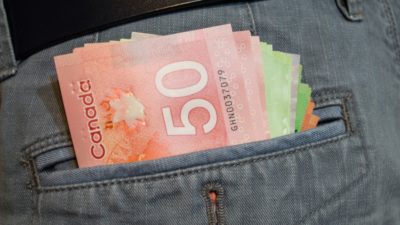In an article published about Dream Office Real Estate Investment Trst (TSX:D.UN) back in March, I wrote, “I believe the consistent yield and slimming of the company will turn out to be a solid investment for you.”
I believed that because Dream Office was executing a rebuild that would have it get rid of non-core assets and focus on its core portfolio. Further, although Dream Office had already cut its dividend once, I believed that its current yield was quite comfortable.
Well, apparently not…
In a release published in June, Dream Office announced that it would be cutting its dividend by a third from $1.50 per year to $1.00 per year effective with the July 2017 distribution that is paid out on August 15. In the release, the company justified the cut was made “in order to maintain a conservative payout ratio, to retain appropriate maintenance capital for capital expenditures and leasing costs and to generate investment capital to be used to improve the value of our portfolio.”
That’s all fine and dandy, but no one likes to see their income get cut. We need to determine now if sticking with Dream Office despite the 33% shave is still worth it.
As I’ve said a few times now, Dream Office is a REIT under construction. It expanded too quickly — especially in Calgary, when oil prices were really strong — and now it is suffering. It has been executing its strategic plan to sell a significant amount of its total square footage in an effort to bring its IFRS value closer to what its shares are trading at. That strategy got a massive boost in the same release announcing the dividend cut.
Dream Office announced it would be selling its 50% interest in Scotia Plaza, a crown jewel investment that I’d thought was untouchable. But management saw the property having reached a peak and viewed it as the perfect opportunity to get profits and focus on other assets. With this deal, Dream Office has sold or has under contract approximately $3.2 billion worth of real estate totaling 15 million square feet.
The company will be significantly different. Before the sale, 53% of its IFRS value was in Toronto, with numerous other regions also represented. The pro forma portfolio, based on IFRS values, will be comprised of 62% in Toronto, 14% in Montreal, 13% in Calgary, with North York, Mississauga, Ottawa, and Saskatoon comprising the rest.
It is a much leaner operation with 49 properties, 8.6 million square feet, and an occupancy ratio of 91.8%. This last point is significant because as of Q1 2017 (before any of the sales), it had 106 properties with 15.4 million square feet, but it only had an occupancy ratio of 88.6%. By selling many of its weaker units, Dream Office was able to boost its operating ratio a lot.
Dream Office intends to repurchase up to $400 million worth of shares in a modified Dutch auction. It will acquire shares within the price range of $18-21 per share with increments of $0.25 per share. That means it can buy back anywhere from 19 million to 22 million total shares, which would significantly cut the outstanding float and get the company much closer to its NAV.
So, is Dream Office still worth buying? Even when accounting for the $1 in dividend, you’re still earning a 5% yield. And with the company gobbling up shares, Dream Office will be leaner and on much stronger footing. I’m not too happy with the dividend cut, but I still believe that Dream Office has a strong future ahead of it.








